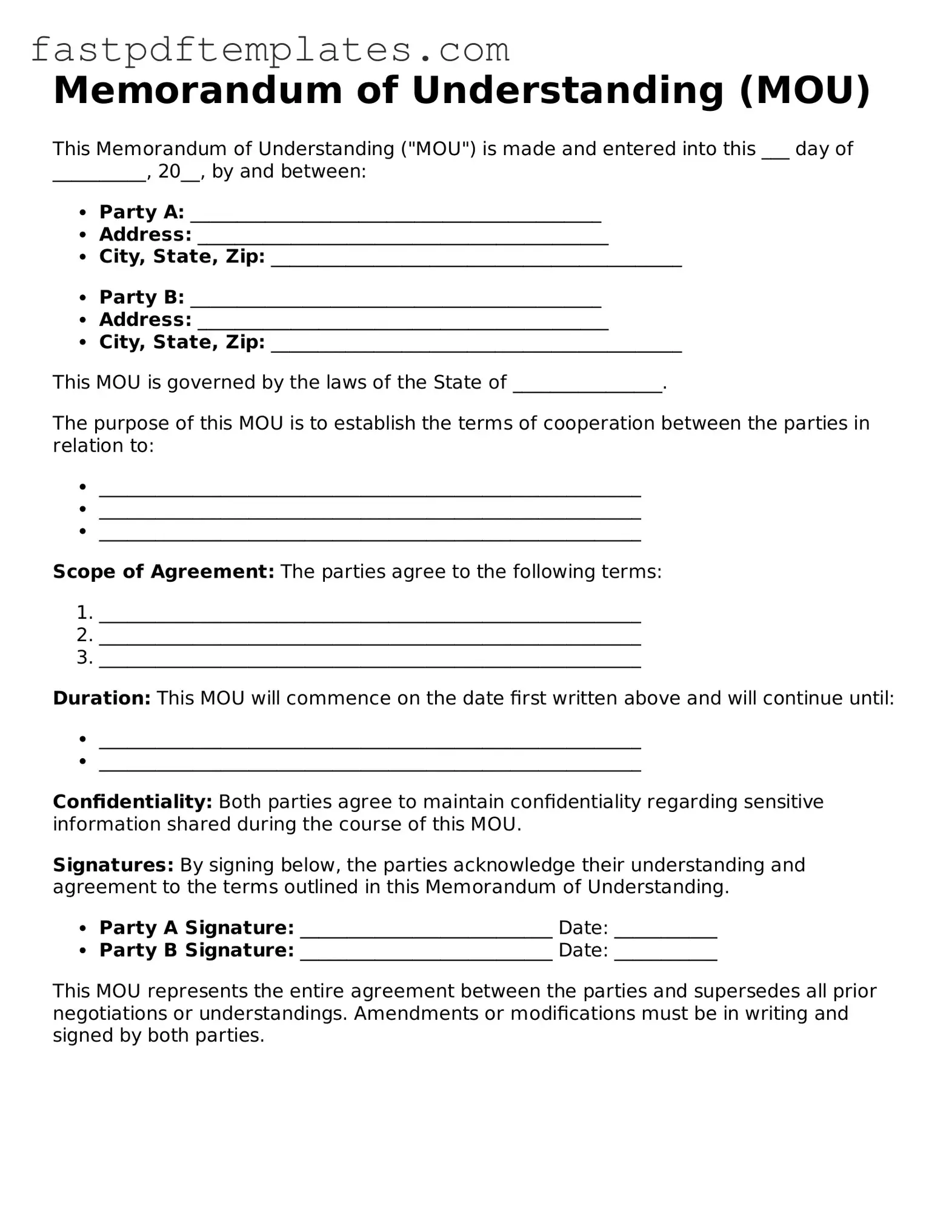A Letter of Intent (LOI) serves a similar purpose to a Memorandum of Understanding (MOU) by outlining the intentions of parties to enter into a formal agreement. Both documents express a mutual understanding and can include key terms and conditions. However, while an LOI often indicates a preliminary commitment to negotiate, an MOU typically reflects a more concrete agreement on specific points, even if it is not legally binding. The LOI is often used in business transactions to signal seriousness, whereas an MOU may be more common in collaborative projects or partnerships.
A Partnership Agreement is another document that shares similarities with an MOU. This agreement outlines the roles, responsibilities, and contributions of each party involved in a partnership. While an MOU may simply outline intentions and goals, a Partnership Agreement is more detailed and legally binding. It includes provisions for profit-sharing, decision-making processes, and dispute resolution, making it essential for formal business partnerships. Both documents aim to clarify expectations but differ in their level of detail and enforceability.
An Executive Summary can also be compared to an MOU, as both serve to communicate key information about a project or initiative. An Executive Summary provides a concise overview of a larger document, such as a business plan or project proposal, while an MOU summarizes the intentions and agreements between parties. Although an Executive Summary is typically a standalone document used for communication, an MOU focuses on the collaborative aspect and the commitments made by the parties involved.
Non-Disclosure Agreements (NDAs) share a functional relationship with MOUs, particularly in contexts where confidentiality is a concern. An NDA protects sensitive information shared between parties, while an MOU may outline the terms under which such information can be shared. Both documents foster trust and facilitate collaboration by clarifying expectations. However, NDAs are legally binding and focus specifically on confidentiality, whereas MOUs can address a broader range of topics, including goals and responsibilities.
A Service Level Agreement (SLA) is another document that resembles an MOU in terms of establishing expectations. An SLA outlines the specific services to be provided, performance metrics, and responsibilities of both parties. Like an MOU, it sets the groundwork for a working relationship. However, an SLA is typically more detailed and focuses on measurable outcomes, while an MOU may be more general in its objectives. Both documents are essential for ensuring clarity in collaborative efforts.
A Collaboration Agreement is closely related to an MOU, as both documents are designed to facilitate cooperative efforts between parties. A Collaboration Agreement often includes detailed terms regarding the scope of work, resource allocation, and timelines. While an MOU may simply express the intent to collaborate, a Collaboration Agreement formalizes the partnership and establishes clear expectations and responsibilities. Both documents aim to promote effective cooperation but differ in their level of specificity and legal enforceability.
Finally, a Grant Agreement shares similarities with an MOU in that both documents outline the terms of a collaborative effort, often in the context of funding. A Grant Agreement specifies the conditions under which funds are provided, including reporting requirements and use of funds. An MOU, while not typically tied to funding, can express the intent to work together on a project that may involve grant funding. Both documents aim to clarify roles and expectations, but a Grant Agreement is more formal and legally binding.
